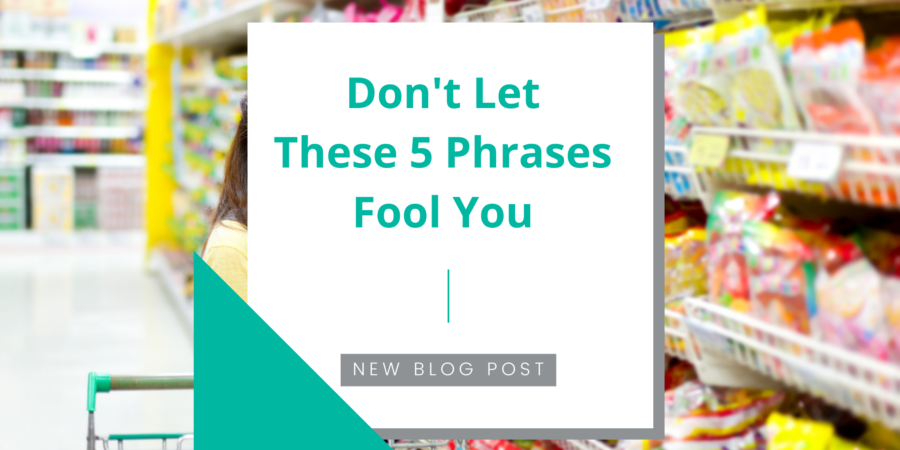Did you get fooled on April Fool’s Day? Though all in good fun, April Fool’s jokes catch most people off guard and often confuses them. In nutrition, the same thing happens all the time. Nutrition marketing fools people to believe the phrases on the package instead of turning the package over to read the ingredient list. Don’t let these marketing phrases that look “oh so great” fool you to think you are eating something healthy when really it might just be a joke:
- All natural: News flash: There is no FDA definition for “all natural”. Organic? Yes. All natural? No. Any company product can put “all natural” on their food item with no regulations or requirements met. Go shopping – I bet you can find all natural potato chips and sugary sweets made with “all natural ingredients”. Don’t be fooled by the term! It means nothing. Do yourself a favor and if you want to eat all natural, try to incorporate more whole foods into your eating.
- Low-fat: The phrase “low-fat” does not always mean healthy. Many times when fat is removed, sugar is added to make it taste just as good. In addition, there are foods like peanut butter that are designed to provide fat. That’s what they are: fat! In this case, choosing a low-fat version adds corn syrup. Uhh thanks, but I’d rather have the healthy fat from my peanut or almond butter. If a food is high is saturated fat (the bad kind), then yes look for a different option. However, if it is rich in mono- and poly-unsaturated fat, like nuts, seeds and avocado, then watch your serving and just eat the real thing!
- Sugar-free: Often times when sugar gets removed, saturated fat gets added. Like “low-fat”, if they took something out and it still tastes good, they likely added something! Yes, you want to try to eat foods with less added sugar, but sugar-free does not always mean healthy. Try choosing whole foods like oats, brown rice, quinoa, etc. for whole grains and you will naturally take in less added sugar. A good rule of thumb with packaged foods is to make sure the sugar is less than half of the total carbohydrates on the food label. If not, put it back and pick up its neighbor on the shelf!
- Whole grain: Amazingly enough companies can put “whole grain” or “whole wheat” on their products and make the first ingredient “enriched unbleached wheat flour”. Yep, it is true! As a consumer, you need to look for “100% Whole Wheat/Whole Grain” to ensure that the first ingredient is whole wheat or whole grain flour. It could be the first ingredient in any of the above marketing phrases, but the “100%” requires it to be the first ingredient. Check the ingredient list!
- 100 Calories: Just because it says “100 Calories” does not necessarily mean it is good for you. It can be 100 calories of sugar and flour which does little for your body. Remember calories are not bad; you just need to eat them in relation to how much you need. Some foods turn people away like peanut butter, cheese and avocado because they are high calorie, but they are also high in things like protein, calcium, iron, healthy fat, etc. The key is eating a smaller serving size. If you are going to eat 100 calories, make it nutrient-rich and not full of fluff!


